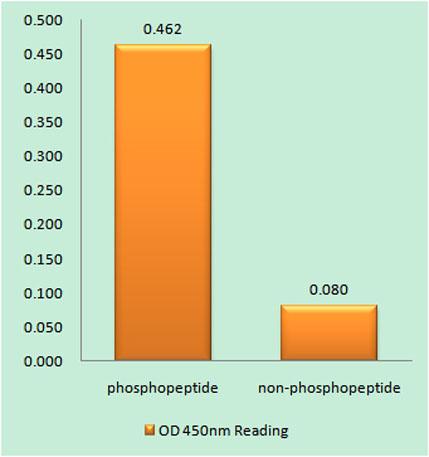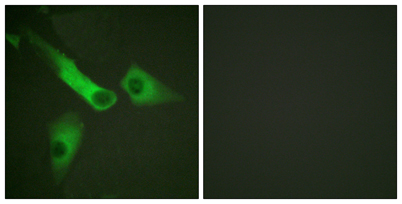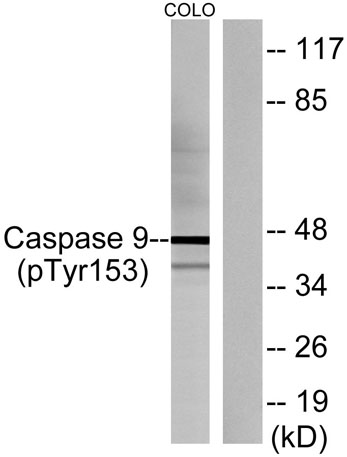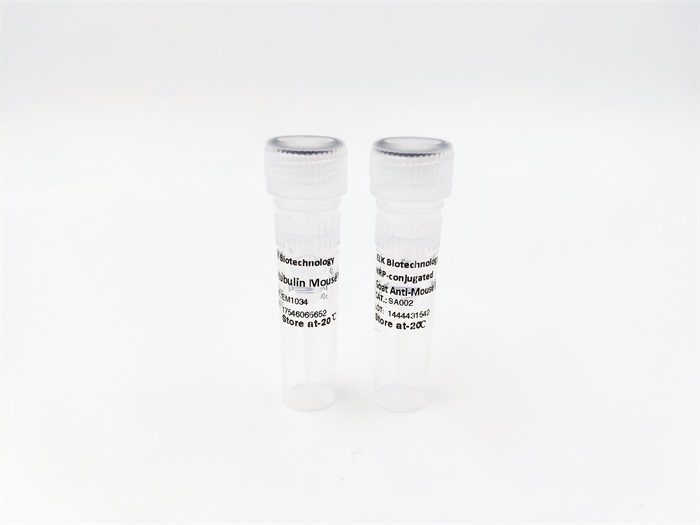








Caspase-9 (phospho Tyr153) rabbit pAb
 One-click to copy product information
One-click to copy product information$148.00/50µL $248.00/100µL
| 50 µL | $148.00 |
| 100 µL | $248.00 |
Overview
| Product name: | Caspase-9 (phospho Tyr153) rabbit pAb |
| Reactivity: | Human;Rat;Mouse; |
| Alternative Names: | CASP9; MCH6; Caspase-9; CASP-9; Apoptotic protease Mch-6; Apoptotic protease-activating factor 3; APAF-3; ICE-like apoptotic protease 6; ICE-LAP6 |
| Source: | Rabbit |
| Dilutions: | Western Blot: 1/500 - 1/2000. Immunofluorescence: 1/200 - 1/1000. ELISA: 1/10000. Not yet tested in other applications. |
| Immunogen: | The antiserum was produced against synthesized peptide derived from human Caspase 9 around the phosphorylation site of Tyr153. AA range:119-168 |
| Storage: | -20°C/1 year |
| Clonality: | Polyclonal |
| Isotype: | IgG |
| Concentration: | 1 mg/ml |
| Observed Band: | 46kD |
| GeneID: | 842 |
| Human Swiss-Prot No: | P55211 |
| Cellular localization: | nucleus,mitochondrion,cytosol,apoptosome, |
| Background: | CASP9 encodes a member of the cysteine-aspartic acid protease (caspase) family. Sequential activation of caspases plays a central role in the execution-phase of cell apoptosis. Caspases exist as inactive proenzymes which undergo proteolytic processing at conserved aspartic residues to produce two subunits, large and small, that dimerize to form the active enzyme. Caspase 9 can undergo autoproteolytic processing and activation by the apoptosome, a protein complex of cytochrome c and the apoptotic peptidase activating factor 1; this step is thought to be one of the earliest in the caspase activation cascade. Caspase 9 is thought to play a central role in apoptosis and to be a tumor suppressor. Alternative splicing results in multiple transcript variants. |
-
 Enzyme-Linked Immunosorbent Assay (Phospho-ELISA) for Immunogen Phosphopeptide (Phospho-left) and Non-Phosphopeptide (Phospho-right), using Caspase 9 (Phospho-Tyr153) Antibody
Enzyme-Linked Immunosorbent Assay (Phospho-ELISA) for Immunogen Phosphopeptide (Phospho-left) and Non-Phosphopeptide (Phospho-right), using Caspase 9 (Phospho-Tyr153) Antibody -
 Immunofluorescence analysis of HepG2 cells, using Caspase 9 (Phospho-Tyr153) Antibody. The picture on the right is blocked with the phospho peptide.
Immunofluorescence analysis of HepG2 cells, using Caspase 9 (Phospho-Tyr153) Antibody. The picture on the right is blocked with the phospho peptide. -
 Western blot analysis of lysates from COLO205 cells, using Caspase 9 (Phospho-Tyr153) Antibody. The lane on the right is blocked with the phospho peptide.
Western blot analysis of lysates from COLO205 cells, using Caspase 9 (Phospho-Tyr153) Antibody. The lane on the right is blocked with the phospho peptide.

 Manual
Manual